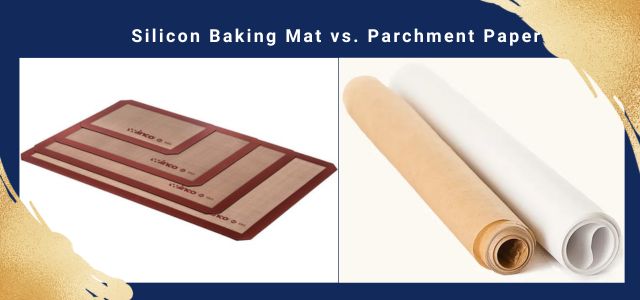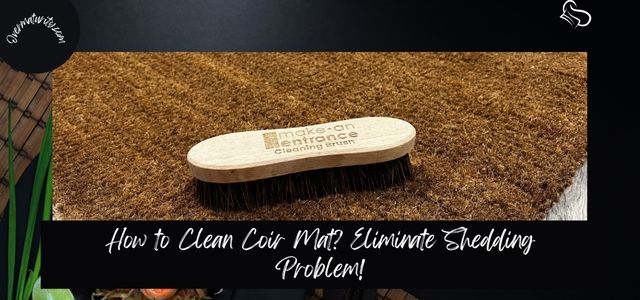A silicone baking mat is a versatile kitchen tool accessory that has gained popularity among mothers and chefs. It is made from food-grade silicone, a flexible and durable material, these mats have transformed the way we approach baking and cooking. The remarkable properties of silicone make these mats stand out as versatile alternatives to traditional parchment paper and cooking sprays.
Silicone baking mats are highly reusable, which sets them apart as an eco-friendly choice. Unlike single-use parchment paper or aluminum foil, these mats can be used hundreds of times with proper care. By investing in a few high-quality silicone baking mats, you can significantly cut down on your kitchen’s expenses.
In this guide, we will delve into the world of silicone baking mats, exploring their uses, benefits, and a comprehensive comparison with the versatile parchment paper.
What is a Silicon Baking Mat Made of?
Silicone Mat is a synthetic material derived from silicon, a natural element found in sand, quartz, and other minerals. It is heat-resistant, non-reactive, and inherently non-stick. It can endure temperatures ranging from around -40°F (-40°C) to over 450°F (232°C), making it suitable for a wide array of baking and cooking tasks. This versatility allows you to use these mats for tasks that go beyond traditional baking, such as roasting vegetables or preparing delicate dishes that require controlled heat exposure.
The non-stick surface of silicone baking mats eliminates the need for greasing pans or using parchment paper. The non-stick surface also contributes to easy food release, ensuring that your baked goods maintain their shape and appearance.
What is a Silicone Baking Mat Used For?
Silicone baking mats find their primary use in baking, providing a non-stick surface for a wide range of items. They are ideal for baking delicate items like cookies and pastries, as well as for roasting vegetables or reheating foods in the oven. The non-stick surface ensures easy food release, minimizes the risk of burning or uneven cooking, and reduces the need for excessive oil or fats.
Additionally, silicone baking mats can be used for tasks beyond baking. They are excellent surfaces for kneading and rolling out dough, as the dough is less likely to stick to the mat. This versatility makes them a valuable addition to any kitchen.
Safety of Silicone Baking Mats
Silicone baking mats are widely regarded as safe and practical tools for baking and cooking. Crafted from food-grade silicone, these mats offer heat resistance, non-reactivity, and a non-stick surface that simplifies the baking process. Reputable brands ensure the quality and safety of their products, adhering to extreme standards to prevent the release of harmful chemicals or fumes when exposed to high temperatures.
High-quality silicone baking mats can withstand the heat of ovens without emitting toxic substances, making them a reliable choice for various culinary tasks. While using them, it’s crucial to follow the manufacturer’s temperature guidelines and care instructions to maintain their integrity. Routine inspections help monitor for wear and tear, ensuring that the mats remain in good condition.
In essence, silicone baking mats provide a safe alternative to traditional baking methods using only parchment paper, contributing to an enjoyable cooking experience while maintaining food safety standards.
Using a Silicon Baking Mat vs. Parchment Paper
When it comes to lining your baking sheets or pans, both silicone baking mats and parchment paper have their own advantages and considerations. Here’s a comparison to help you decide which option suits your baking needs:
Silicone Baking Mats:
- Reusable and Eco-Friendly:
- Silicone baking mats are environmentally friendly due to their reusability. They can be used hundreds of times, reducing the need for disposable parchment paper and minimizing kitchen waste.
- Non-Stick Performance:
- Silicone mats offer excellent non-stick properties, making them ideal for baking delicate items like cookies and pastries without the need for added fats.
- Consistent Results:
- The even heat distribution provided by silicone baking mats promotes uniform baking, helping to achieve consistent results.
- Versatility:
- These mats can also be used for rolling out dough, kneading, and even as a surface for candy-making due to their non-stick nature.
- Investment:
- While silicone baking mats may have a higher initial cost, their long-term reusability can lead to cost savings over time.
Parchment Paper:
- Convenience:
- Parchment paper offers easy cleanup since it can be simply discarded after use, eliminating the need for washing and drying.
- Variety of Uses:
- Apart from baking, parchment paper is handy for tasks like wrapping food for steaming, en papillote cooking(wrapping and cooking food in air-tight, parchment paper), and preventing food from sticking to surfaces during preparation.
- Less Expensive:
- Parchment paper tends to be less expensive than silicone baking mats, making it a budget-friendly option.
- Crispier Results:
- Parchment paper allows for better browning and crisper textures in some baked goods due to its permeability.
- Disposal:
- While convenient, using parchment paper contributes to disposable waste, which might be a concern for those aiming for eco-friendliness.
How to Choose Between Silicone Baking Mats and Parchment Paper?
The choice between a silicone baking mat and parchment paper depends on your baking style, preferences, and environmental considerations. Both options have their merits, and having both on hand gives you the flexibility to choose based on the specific needs of each recipe.

- Consider the types of recipes you frequently prepare. Do you often bake delicate pastries, cookies, or sticky items? Are you working with recipes that require precise heat distribution? Understanding your typical baking needs will help you determine which option aligns better.
- Evaluate your preferences for convenience. Silicone baking mats require cleaning and storage, whereas parchment paper offers quick cleanup with easy disposal. Consider how much time and effort you’re willing to invest in both using and maintaining each option.
- Reflect on your environmental values. If sustainability and reducing kitchen waste are important to you, silicone baking mats are a greener choice due to their reusability. On the other hand, if convenience and less mess are priorities, parchment paper might be more suitable.
- Consider the frequency of your baking endeavors. If you bake frequently and plan to use the same mat multiple times, investing in a silicone baking mat might offer better long-term value than purchasing parchment paper regularly.
- Compare the costs of both options. Silicone baking mats have a higher upfront cost but can be used repeatedly, potentially saving you money over time. Parchment paper is generally more affordable on a per-use basis.
By carefully considering these factors, you can make an informed decision that suits your baking style, preferences, and values, ensuring successful and enjoyable baking experiences.
Tips & Warnings for Using Silicone Baking Mats
Using a silicone baking mat can greatly enhance your baking and cooking experiences, but it’s important to follow certain guidelines to ensure optimal results and safety. Here are some valuable tips and warnings to keep in mind when working with silicone baking mats:
Tips:
- Before using your new silicone baking mat, wash it with warm, soapy water and rinse thoroughly. This helps remove any manufacturing residues and ensures a clean surface for your baking.
- Place your silicone baking mat on a flat, sturdy baking sheet or pan. This prevents any uneven heating or potential damage to the mat.
- While silicone is durable, it can be punctured or torn by sharp utensils. Use silicone, wooden, or plastic utensils instead of metal ones to avoid damaging the mat’s surface.
- When storing your silicone baking mat, avoid folding or creasing it, as this can lead to permanent marks that might affect its performance. Roll the mat or store it flat to maintain its integrity.
- Most silicone baking mats have a non-stick surface on one side and a slightly textured surface on the other. Make sure to place your food on the non-stick side for best results.
- Silicone baking mats can slightly alter baking times due to their efficient heat distribution. Keep an eye on your baked goods and consider adjusting the baking time or temperature as needed.
- For delicate items like cookies, allow them to cool slightly before removing them from the mat. This helps prevent any breakage or distortion during the release process.
Warnings:
- While silicone baking mats are heat-resistant, avoid exposing them to direct flames, broilers, or temperatures exceeding their specified limits. Extreme heat can damage the mat or compromise its non-stick properties.
- Do not cut or slice directly on the silicone baking mat’s surface with sharp knives, as this can cause cuts or scratches that impact its performance.
- Regularly inspect your silicone baking mat for signs of damage, such as tears, cuts, or significant discoloration. If you notice any deterioration, consider replacing the mat to maintain food safety and quality.
- Each silicone baking mat might have specific care instructions provided by the manufacturer. Always adhere to these guidelines to ensure the mat’s longevity and optimal performance.
- Use mild dish soap and a soft sponge to clean your silicone baking mat. Avoid using abrasive scouring pads or harsh cleaners, as they can damage the non-stick surface.
By following these tips and being mindful of the warnings, you can make the most of your silicone baking mat, ensuring safe and successful baking endeavors while extending the mat’s lifespan.
How to Store a Silicone Baking Mat for Longevity:
Properly storing your silicone baking mat is key to preserving its lifespan and ensuring consistent performance. Begin by giving it a thorough cleaning and allowing it to completely dry. Wash the mat with mild soap and warm water, rinse thoroughly, and let it air dry. This step prevents any lingering residues or trapped moisture from compromising the mat during storage. Depending on your storage space and preference, you can choose to store it either flat or rolled up.
If you decide to roll it up, do so with care to avoid creating permanent creases, which can impact its even heating and non-stick capabilities. When selecting a storage spot, opt for a cool, dry location shielded from direct sunlight, heat sources, or extreme temperatures. By adhering to these storage practices, you can ensure that your silicone baking mat remains a dependable ally for your culinary endeavors.
Conclusion
The silicone baking mat transforms cooking with its versatility, eco-friendliness, and accuracy. Made from safe silicone, it’s a strong, non-stick helper that goes beyond baking. Deciding between silicone mats and parchment paper depends on ease, money, and the environment. Embracing silicone supports sustainability and savings, making the kitchen a place of creativity and mindful choices. As we enjoy tasty treats, remember that innovation and eco-awareness come together, improving both delicious food and the precious world we share.


